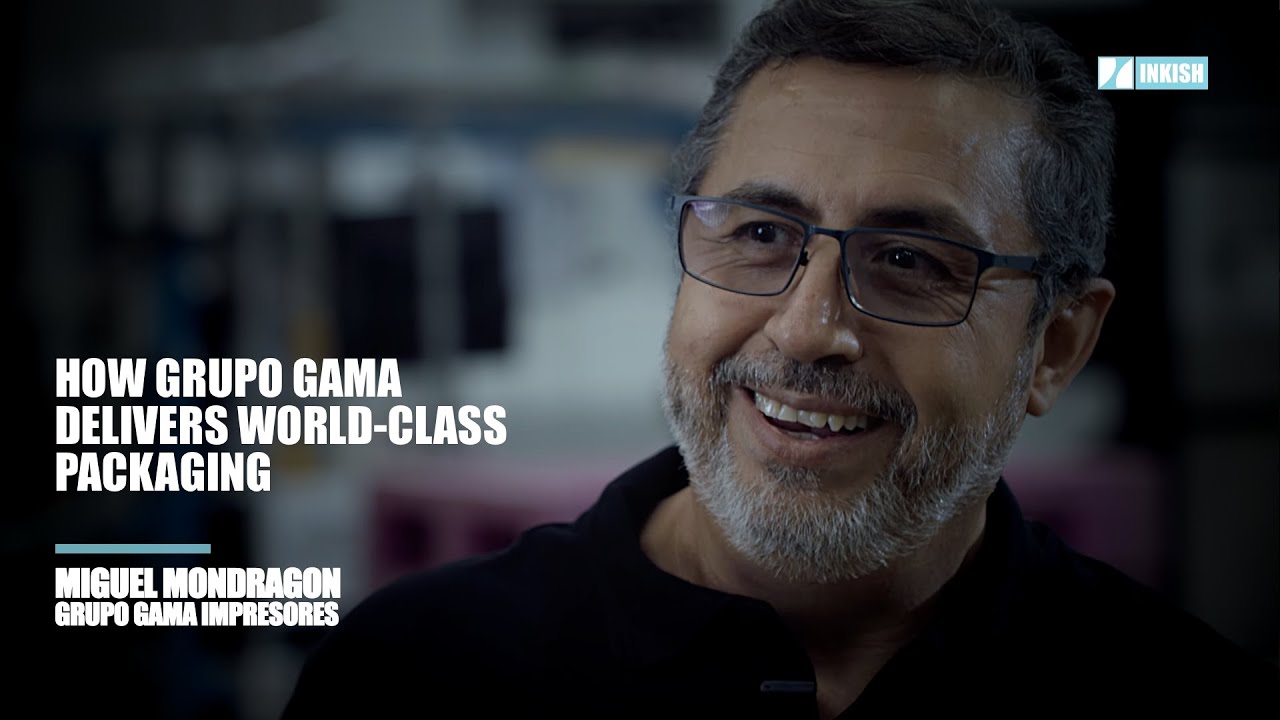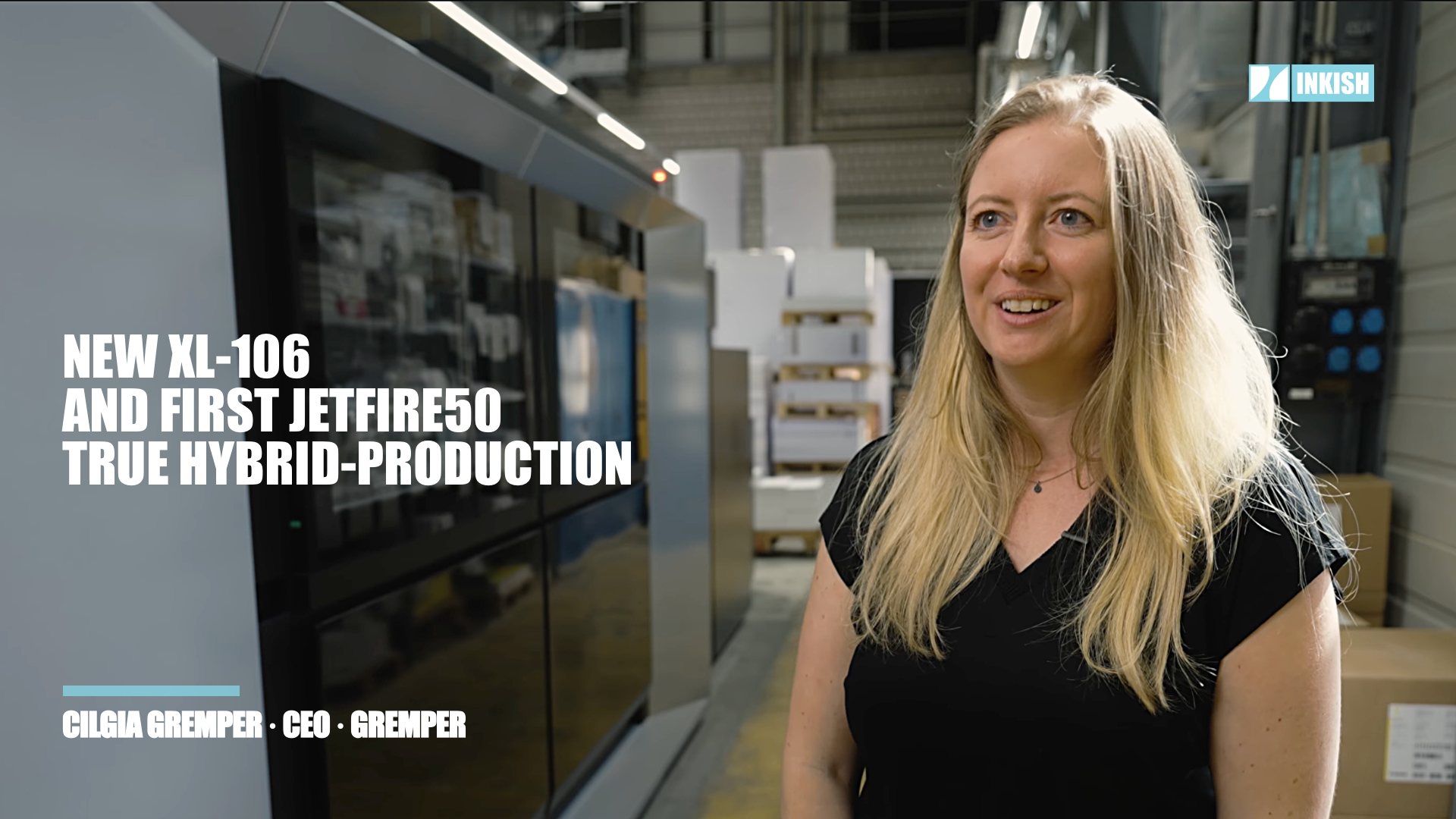

Subscribe to our INKISH newsletter

German edition click here. A small, family-owned printing company in Germany focuses entirely on pharmaceutical and cosmetics printing, with a strong ambition to be the fastest producer of pharmaceutical leaflets and instructions for use. The business originated from a concession to print a weekly newspaper, which served as the foundation for the Bernecker family’s printing activities. For decades, print news remained dominant, but over the past 20 years, the industry has changed significantly. Despite the company’s heritage and long-term direction, recent global instability has shown that outside forces can quickly disrupt small businesses. The pharmaceutical focus began roughly ten years ago, though they had handled related work earlier. Over time, customer needs and available production technologies pushed them further into the pharma niche. Finding skilled labor in Western Europe is difficult due to demographic change and fewer young people pursuing manufacturing roles. The company attracts younger workers with its flat structure, but must invest in training. Pharmaceutical print remains highly specialized even though it still involves printing, cutting, and folding. The substrates used are extremely light—40 to 60 gsm—and require technical adjustments, new processes, and training to manage. Their promise of fast delivery — often within 24 hours and typically within 10–15 working days — sets them apart. Their small size and short-run focus make this speed possible. To support this model, they are transitioning from offset to inkjet, eliminating plates, chemicals, and various mechanical components. This shift improves turnaround time, maintenance needs, and sustainability. The company’s folding work is highly complex—often involving more than ten folds—and few machine builders can support these requirements. H+H became a partner because both companies shared the same development goals. Their configuration includes rotary cutting followed by complex folding. The M9 folder automates pocket adjustment, appealing to younger employees who expect touchscreen functionality. Operators still fine-tune settings, but setup time is drastically reduced. The company sees itself as a development partner, helping refine both folding and thin-paper inkjet solutions. Implementations required collaboration, careful communication, and rapid response to issues from the technology supplier. The production setup delivers major benefits: faster operation, fewer processing steps, fewer operators, reduced error potential, and greater value creation in a single line. The move to inkjet also eliminates heat as a production factor, which they note as significant.

Language: Spanish - Subtitles: Spanish, English & German. Miguel Ángel Mondragón de la Garza has led finishing at Grupo Gama for more than 15 years, transforming printed work into high-quality packaging, brochures, books, corrugated and folding cartons—all produced entirely in-house. The family business began 30 years ago, when his brother Carlos started with small equipment and gradually built toward today’s advanced operation. Miguel joined after working in metallurgy in Monterrey, helping develop the workshop from its earliest days. The finishing department handles continuous changeovers, ensuring fast, high-quality output while keeping costs low. Preventive maintenance, process control, and minimizing repair time are essential to staying competitive. Modernization is constant. The team upgrades machines to improve speed, accuracy, and material handling, gradually retiring older systems. Miguel highlights his experience learning on early Brausse equipment and emphasizing how European machines—especially Koenig & Bauer—have helped solve critical corrugation and alignment challenges. Over years of testing and collaboration, Koenig & Bauer solutions proved reliable, and today the plant runs four Koenig & Bauer systems among roughly 24 machines. Key innovations include the Ipress and the Omega Allpro 130 gluers, which deliver precise, perfectly aligned boxes and reduce production headaches. Miguel takes pride in seeing finished packaging on display and continues to push innovation to help the company meet customer demands and stay competitive in a changing market. Made in collaboration with Revista el Impresor

Deutscher version Cilgia Gremper shares her journey growing up inside a print business that never settles for “impossible.” Cilgia's father started working at the printing company in 1991, took over the company in 1997, and renamed it Gremper AG. Gremper moved into its current home in 2008 and has continued to evolve since then. In 2021, Cilgia took over leadership — continuing a legacy built on passion, trust, and constant curiosity. Cilgia reflects on learning print from the inside out. As a child, she and her sister spent school vacations on the shop floor, exploring open Heidelberg machines and learning from printers who took the time to teach. But joining the company professionally in 2018 wasn’t easy. She felt lost at first, unsure where she fit — until projects and experience slowly revealed her path. Today, Cilgia leads a team known for pushing boundaries. While others say “it can’t be done,” they thrive on finding solutions. Rather than chasing volume or low-cost production, their work focuses on high-value print crafted for clients who appreciate paper, detail, and tactile experience. From pre-press collaboration to finishing, the goal is to elevate every project into something memorable. Cilgia describes an environment filled with technology, precision, and constant learning: humidity, temperature, specialty machines, and the complexities of modern production. Success, she says, depends on good partners, open dialogue, and trust. That mindset guided their investment into digital inkjet technology — specifically, offset-quality inkjet from Heidelberg. While there are limitations in format and color, the results impressed them: outstanding quality comparable to their finest offset work. It has opened new possibilities, especially when combining processes — offset for content, inkjet for covers, or mixing both to create unique outcomes. The adoption hasn’t been without challenges. With close collaboration between their team and Heidelberg technicians, they worked through early issues. Weekly exchanges and a shared learning spirit helped transform uncertainties into progress. Not every job is suited for inkjet, and every day still requires evaluating what is best printed on which technology. Inkjet offers power and flexibility, but offset remains essential — especially for cost-sensitive production. For Cilgia and her team, print is far more than reproduction. It’s about guiding clients, exploring possibilities, making thoughtful choices, and creating work that isn’t thrown away but experienced. Rooted in tradition yet open to change, they have built a company where curiosity and craftsmanship meet innovation — and where “impossible” is simply an invitation to try harder.

Of course, digital transformation isn't only about equipment. When a company like Flower City, just a few years ago, was a litho offset-only company, investing in digital technology from AGFA and learning about the opportunities it presents to the company is simply amazing. The company delivers PODs to numerous household names in the US, but prides itself on being large enough to have a wealth of resources available to us, yet small enough to remain nimble and agile, serving its customers exceptionally well. You should have been there - it's really a great company with many very nice people. What a great day!

INKISH is your info channel for and about the print industry. We bring information about people, companies, events and technology.